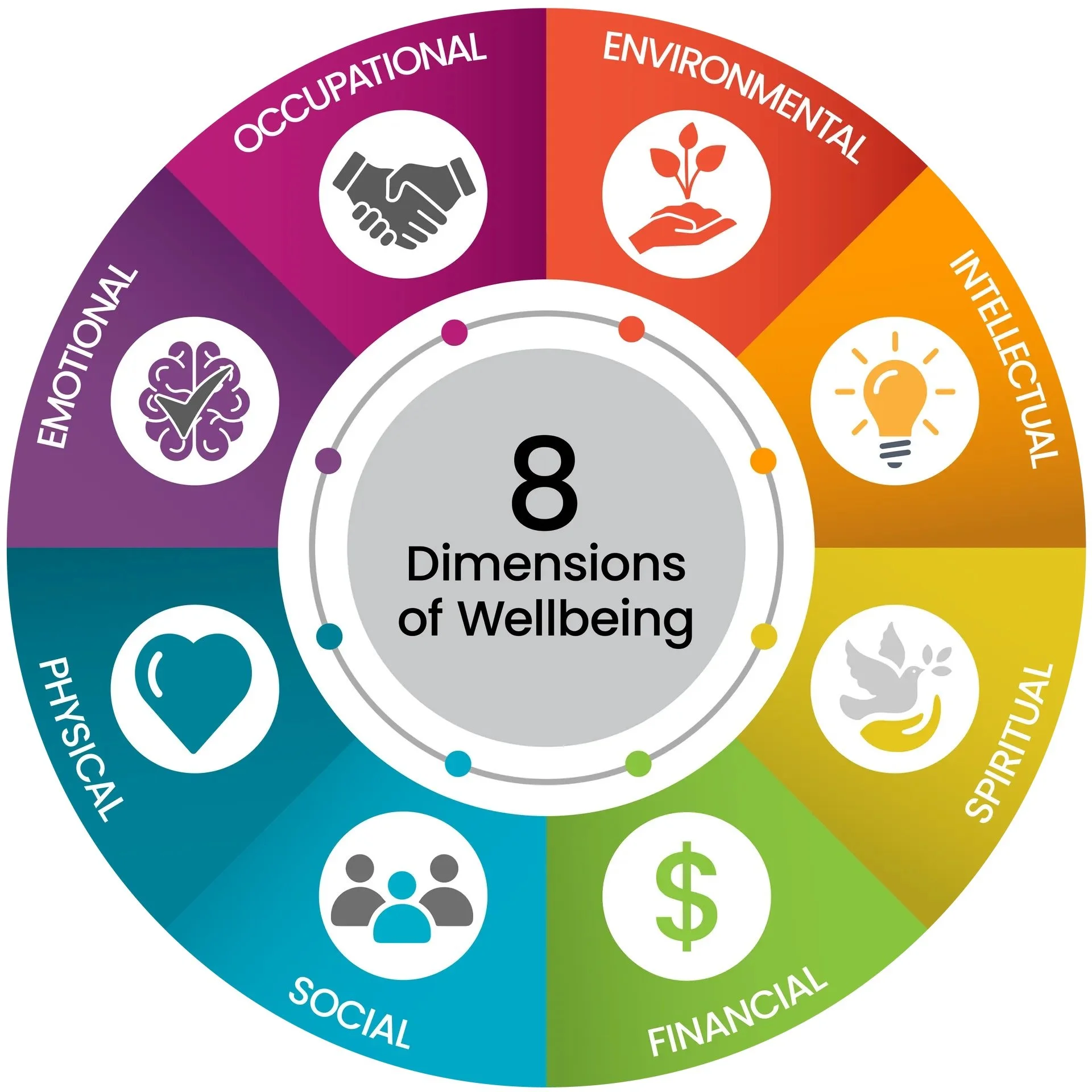What Leaders Need to Know About the 8 Dimensions of Wellbeing
When we talk about employee health and performance, two words often come up: wellness and wellbeing.
They’re related—but they’re not the same.
Wellness focuses on daily habits like sleep, nutrition, and exercise. It’s personal, proactive, and often the focus of company initiatives like step challenges, healthy snacks in the break room, or offering gym memberships as part employee benefits packages.
Wellbeing goes deeper. It’s not just what people do—it’s how they feel, how they function, and how supported they are overall.
That broader picture includes purpose, connection, and the systems we operate in. For organizations, understanding this distinction is key to building teams that are resilient and equipped to navigate change.
At Nimble Up, we define wellbeing across 8 dimensions:
Emotional
Physical
Social
Intellectual
Spiritual
Environmental
Occupational
Financial
These dimensions are interconnected. If one is out of balance—say, someone’s emotionally drained or their workload is unsustainable—it will eventually ripple across the others. But the opposite is also true: strengthening even one area can have a powerful, positive effect on a person's overall wellbeing.
Over the next several weeks, we’ll break down each dimension in its own email:
What does this really mean in a work context?
Why should leaders and teams pay attention to it?
What practical strategies can improve it without adding fluff or burnout to people's already busy lives?
We’re kicking things off next week with Emotional Wellbeing—how to recognize it, support it, and lead with it. Stay tuned!

